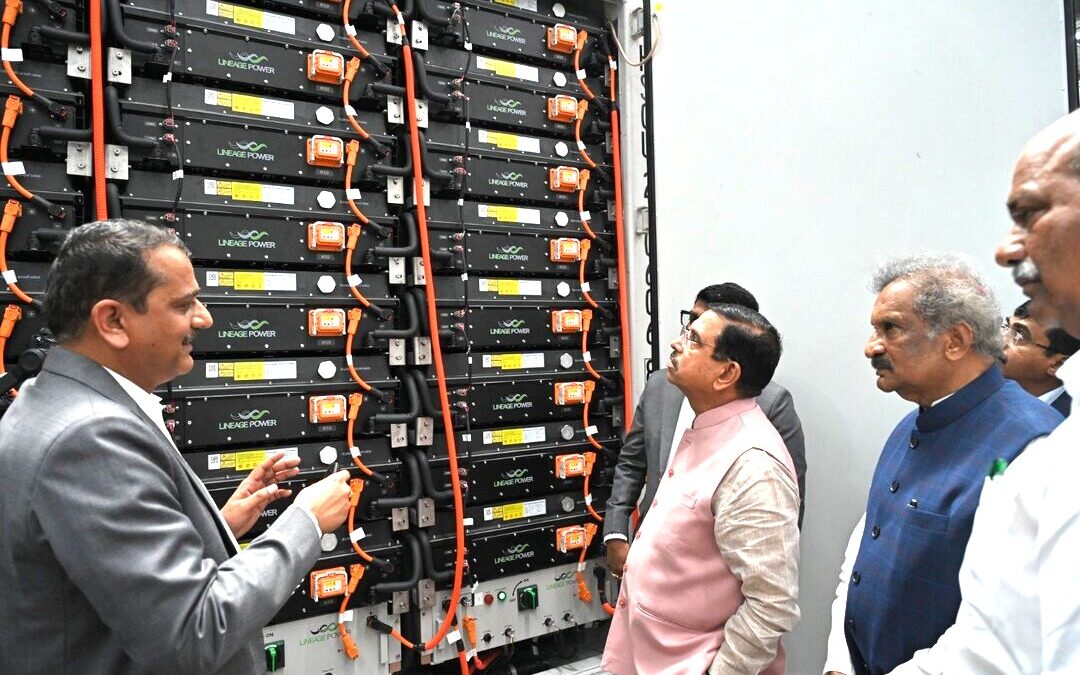India Opens One of Its Largest Battery Storage Plants, Eyes Global Energy Role
India launches advanced battery storage plant in Bengaluru to boost clean energy and reduce power grid dependence on coal.
India inaugurated one of its largest battery energy storage system manufacturing facilities on Friday in the southern city of Bengaluru, marking a significant step in the country’s transition to clean energy.
The facility, located in the Bidadi Industrial Area, was inaugurated by Union Minister for New and Renewable Energy Pralhad Joshi. With an annual manufacturing capacity of 5 gigawatt-hours, the fully automated plant is among the most advanced of its kind in the country, the minister said.
“This launch is a promise for cleaner energy, greater grid resilience, and India’s leadership in the global energy storage market,” Joshi said at the opening ceremony.
The new facility, operated by PACE Digitek, features a cell-to-pack assembly line designed to ensure high-quality production with minimal human intervention.
According to Joshi, the plant is critical for integrating renewable energy into India’s grid, managing peak demand, and ensuring frequency regulation.
Investment Surge in Energy Storage Sector
India’s energy storage industry is projected to attract investments worth ₹4.79 lakh crore ($57.4 billion) by 2032, according to the India Energy Storage Alliance.
The Central Electricity Authority estimates the country will require 411.4 GWh of energy storage systems by 2032, including 236.22 GWh from BESS and 175.18 GWh from pumped storage projects.
India aims to achieve 500 GW of non-fossil fuel capacity by 2030. With renewable generation increasing by 25–30 GW annually, storage capacity is seen as essential to avoiding over-reliance on coal during periods of intermittent power generation.
Govt Expands Viability Gap Funding
Joshi also announced plans to extend viability gap funding for battery storage. “The Modi government is planning to roll out an additional ₹5,400 crore to support 30 GWh of battery storage capacity,” he said. This is in addition to the ₹3,700 crore already allocated to support 13.2 GWh of BESS projects.
The VGF aims to bridge the financial viability gap for early-stage battery projects and stimulate private sector participation in the energy storage space.
Aatmanirbhar Bharat and Global Ambitions
“This facility is not just about batteries — it is about building India’s energy future,” Joshi said, referring to Prime Minister Narendra Modi’s “Aatmanirbhar Bharat” or self-reliant India vision.
He emphasized the creation of high-value jobs, innovation, and the strengthening of India’s domestic manufacturing ecosystem.
Joshi expressed confidence that India could become a global hub for BESS manufacturing, covering everything from battery packs to control software. The country plans to add more than 47 GW of battery storage capacity between 2022 and 2032 with a total investment of approximately ₹3.5 lakh crore.
Grid Stability Key to Renewable Push
“Without storage, we will either waste energy or fall back on coal,” Joshi warned, adding that robust battery infrastructure will make India’s power grid “strong, stable, and smart.”
India’s renewable energy growth, backed by strong policy support and manufacturing investments, is positioning the country as a central player in the global clean energy landscape.
Also Read:
BYD, Saudi Electricity Ink Deal for World’s Largest Battery Storage Project
Nirmal Menon
Related posts

Subscribe
Error: Contact form not found.


